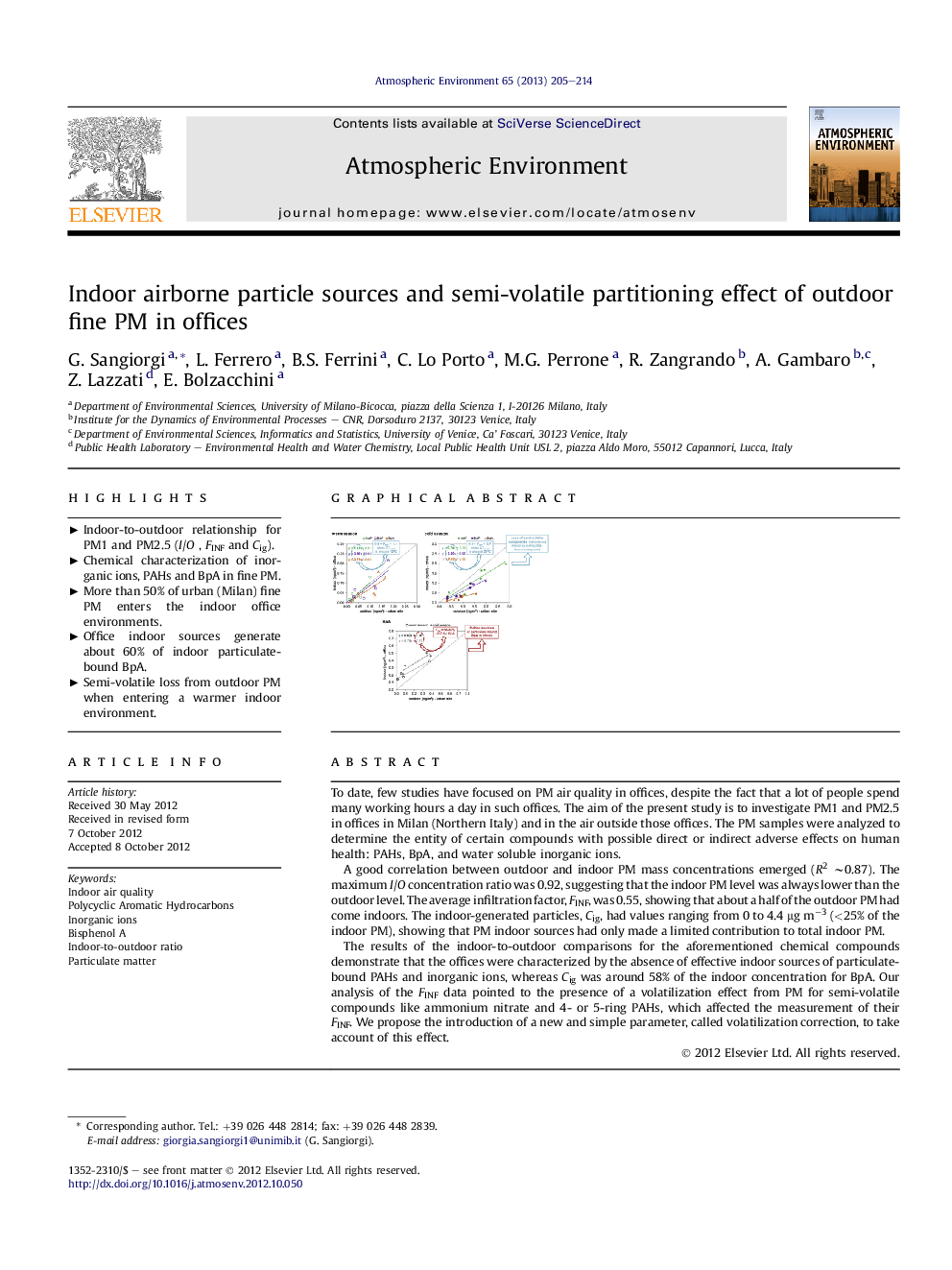| Article ID | Journal | Published Year | Pages | File Type |
|---|---|---|---|---|
| 4438540 | Atmospheric Environment | 2013 | 10 Pages |
To date, few studies have focused on PM air quality in offices, despite the fact that a lot of people spend many working hours a day in such offices. The aim of the present study is to investigate PM1 and PM2.5 in offices in Milan (Northern Italy) and in the air outside those offices. The PM samples were analyzed to determine the entity of certain compounds with possible direct or indirect adverse effects on human health: PAHs, BpA, and water soluble inorganic ions.A good correlation between outdoor and indoor PM mass concentrations emerged (R2 ∼0.87). The maximum I/O concentration ratio was 0.92, suggesting that the indoor PM level was always lower than the outdoor level. The average infiltration factor, FINF, was 0.55, showing that about a half of the outdoor PM had come indoors. The indoor-generated particles, Cig, had values ranging from 0 to 4.4 μg m−3 (<25% of the indoor PM), showing that PM indoor sources had only made a limited contribution to total indoor PM.The results of the indoor-to-outdoor comparisons for the aforementioned chemical compounds demonstrate that the offices were characterized by the absence of effective indoor sources of particulate-bound PAHs and inorganic ions, whereas Cig was around 58% of the indoor concentration for BpA. Our analysis of the FINF data pointed to the presence of a volatilization effect from PM for semi-volatile compounds like ammonium nitrate and 4- or 5-ring PAHs, which affected the measurement of their FINF. We propose the introduction of a new and simple parameter, called volatilization correction, to take account of this effect.
Graphical abstractFigure optionsDownload full-size imageDownload high-quality image (131 K)Download as PowerPoint slideHighlights► Indoor-to-outdoor relationship for PM1 and PM2.5 (I/O, FINF and Cig). ► Chemical characterization of inorganic ions, PAHs and BpA in fine PM. ► More than 50% of urban (Milan) fine PM enters the indoor office environments. ► Office indoor sources generate about 60% of indoor particulate-bound BpA. ► Semi-volatile loss from outdoor PM when entering a warmer indoor environment.
